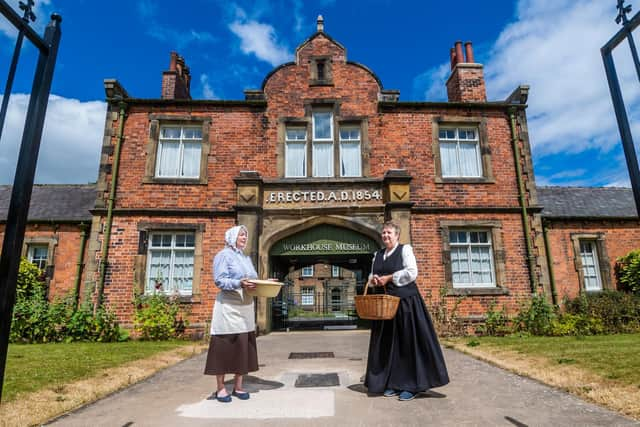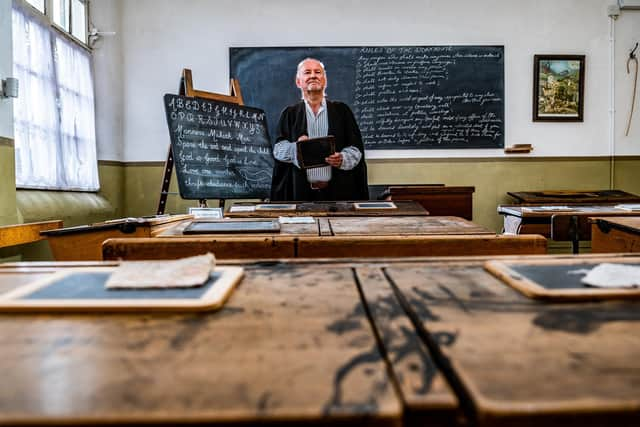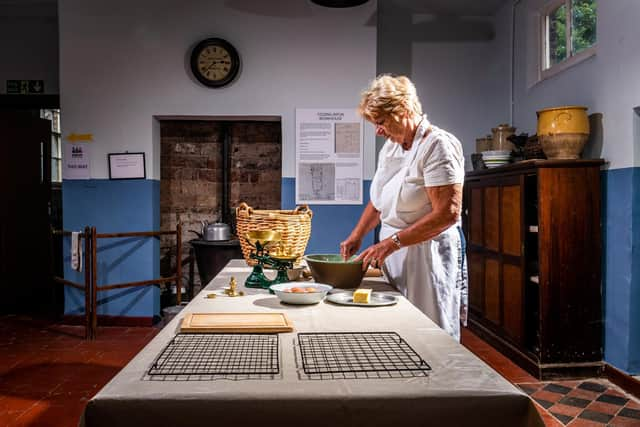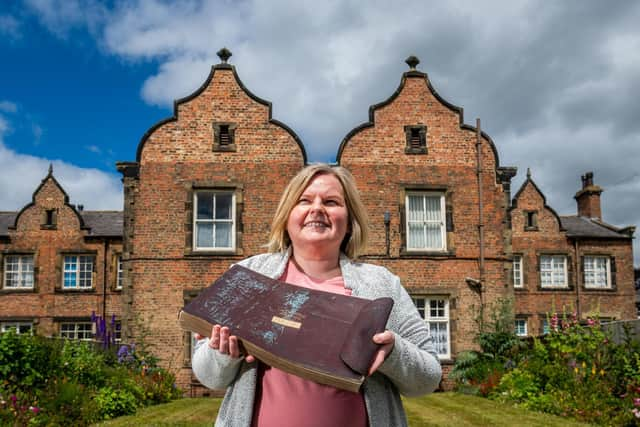Ripon museums join forces and lift lid on dark side of the city's life over the years
There is one date that the Ripon Museums service knows very well indeed. July 28th, 1982. That’s the day when a public meeting in the city decided in favour of setting up a museum, specific for their community.
Ripon being the place that it is, with intense civic pride and always wanting to punch well above its weight, it doesn’t have one museum, but three. Each of which is located in a listed building. One is Grade II, the next is Grade II* and the third, well, you’ve guessed, is a glorious Grade I.
Advertisement
Hide AdAdvertisement
Hide AdAll are centrally located, and there’s a theme which connects them. There’s the Workhouse Museum, not far from the city square, which looks at the life endured by those who ended up there (and those who looked after their frugal existence) in this rather grim segment of social history, the Prison and Police Museum, and The Courthouse.


In essence, visitors can see the sweep of the social and justice system across the centuries, and all within a short walking distance of the other.
The anniversary is being marked with a very special exhibition – Laura Allen, part of the Museums team asked the community to come up with 40 special objects, or places, which reflected the diversity of the buildings, their previous occupants, their lives and their aspirations.
She was overwhelmed with answers and suggestions, and the results are – in the main – being kept secret until the “big reveal” on the same date as the Museum’s foundation.
Advertisement
Hide AdAdvertisement
Hide AdHelen Thornton, the Director of Museums in Ripon, describes the development of the service as a “long, and slow osmosis.”


“It’s a process which is still on-going. But that is the nature of anyone involved in this field, where-ever they may be in Yorkshire or indeed, the world,” she says. “Museums are always evolving, adding to their treasures, and working out the best way to display them and to interpret them. Museums can never ever be allowed to stand still.”
Ripon is a fine example of that ambition – it is currently in the middle of an application which will, hopefully, deliver a grant of £2.5m for an overhaul of the Workhouse buildings. The main block – which stands to the rear of the complex – is in a sorry state of repair. While useable, and safe, its structure leaves a lot to be desired. The roof leaks (all over the place) and it needs swift attention. Many of the old partitions, installed when it was the home of Ripon’s social services department, need ripping out. And, in fact, Helen is more than eager to move out of her very basic office on the first floor – not because it offers any hazards, but because it was once part of the workhouse dormitory space, and she and her team feel that the full story of this remarkable survivor of a bygone age, is not being told in full.
Helen says: “The front block, and the ground floor here (at the moment) show what the daytime existence of the paupers was like – where they ate, and worked, and where some were locked up. But upstairs, we want to open up the spaces where they slept, and the conditions which they lived in. Did you know that, when they went to bed, not only were the dormitories strictly segregated, but that the inmates had to use separate sets of stairs. One was for the women, the other for the men. No mixing at all. That was strictly forbidden.
Advertisement
Hide AdAdvertisement
Hide Ad“One of our plans is to install a lift, so that the first floor becomes completely accessible to all, and which will enable us to tell even more of the workhouse story, and to interpret it better, and more coherently – at the moment, it only gives half the picture”.


Being in the workhouse was a matter of scorn – and derision. The kindest term for someone who slept and worked under its roof, was “an inmate”. Then there were “paupers” and “rogues”. And “vagrants”. Ripon, you might think, was a fairly well-to-do city. There are, and were, many important houses and buildings. It was never cursed by the excesses of the industrial revolution. Most of the workers in the Victorian and Edwardian eras here, were employed on the land. They were tenants living on the property of the landowner. But it only needed a bad harvest, a truly harsh winter, or a rogue landlord, to upset the balance, and for hard-working folk to find themselves thrown out of their homes. Poverty can arise from so many circumstances – and, ironically, in 2022, there is a food bank in the building right next door to the Workhouse Museum.
There is, she and Laura claim, “an extraordinary pride in Ripon and its surrounding area” in the history of the city, and the fact that it contributes considerably into how we understand our not-too-distant past. After all, workhouses were still operating in Britain in living memory, and it was only the advent of the NHS in the late forties which caused their demise after nearly two centuries of existence and stigma toward the inmates.
The footfall for the three properties in the year before Covid struck was around 30,000, a remarkable figure for attractions which are just off the main beaten path. “We shall have to see how people’s visiting habits have changed,” admits Helen, “but then, last year, we had lots of people dropping by because it was the time of the ‘staycation’. Who can p,redict what will happen during this year’s holiday season, where flight restrictions have finally lifted?”
Advertisement
Hide AdAdvertisement
Hide AdBut what the Ripon Museums – and other attractions in the vicinity have done – is to recognise that they need to all pull together, so each month, there’s a meeting of a good-sized group, and they discuss trends, plans and campaigns. They include delegates of the museums, the Cathedral, Newby Hall, Lightwater Valley, Fountains Abbey and Visit Ripon among many others, and they share thoughts and data. “It’s called ‘making the most of our resources’,” says Laura, who has only been in post for a year, “and it’s very forward-looking, and market research-based.”


It’s a delightful quirk that most of the museums volunteers all love dressing up. “Give them an excuse and they’ll just jump into costume,” laughs Helen, “they need no persuasion at all. They’ll take visitors around, everyone from school groups to people who organise trips from groups like the U3A, and everyone in between, others who have simply dropped by, and they’ll play out their roles, everything from a workhouse inmate, to a magistrate at the courthouse, or someone in the dock, a police officer, scullery maid, a laundress, whoever, and they’ll give an added insight into life from a different age. And, greatly to their credit, they’ll have researched those people meticulously, this isn’t playing about for the fun of it. They are as informed as they can be.
“We even had full ‘mock trials’ at the courthouse. The youngsters just love the role play. At first, a lot of silliness goes on, and then when they too can put on a wig, or a hat, or a cotton shift, whatever it may be, they are drawn into becoming part of living history.”
She remembers that one group of children were being told all about the real-life story of a family from Leeds who had walked all the way to Ripon to beg admission to the workhouse. They were cross-examined about their needs. And then, when they admitted that they didn’t come from the immediate Ripon area, they were pretty speedily told to leave. To walk. “That brought home to that group how harsh life really was”, says Laura, “there were quite a few dropped jaws!”
Advertisement
Hide AdAdvertisement
Hide AdThe 40 objects which will be unveiled on July 28 were a community choice, and there were no restrictions on what could be selected. Each is described with a label, and the reasons why it was chosen. “We were fully expecting that someone would pick the chair that was used by the Master of the Workhouse, since it is quite an imposing piece of furniture. But no-one did. Instead, someone has selected the restraining chair that we own, in which the mentally ill were held – against their will. That makes it even more poignant. From the Police building, there’s a manual for officers which dates from the mid-sixties, which makes it only about 60 years old. But what it says is a revelation into how attitudes have changed so drastically within a short living memory. Women police officers, even then, were only fit (in the eyes of this manual) to make the tea, and to attend domestic disputes!”
When that grant comes through, there will be lots more space for community groups, and for artists in residence. Big things and developments are planned. For the moment, however, there’s anticipation for the “big reveal”. Helen and Laura both agree, however, that “You can expect a lot of surprises. And it’s a lovely way to celebrate 40 years of commitment to, and involvement to, the city”.
For opening times visit www.riponmuseums.co.uk, or call on 01765 690799. Admission prices vary.